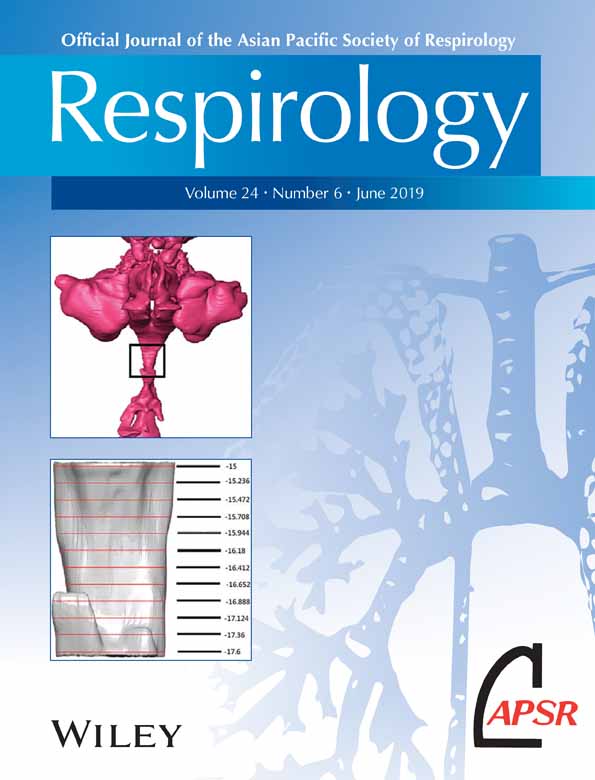Predicting which children have asthma: Are we any closer to finding the Holy Grail?
Abstract
See related Article
The underlying premise of the recent Lancet Commission titled ‘After asthma: redefining airway diseases’1 was that progress in understanding, treating and controlling asthma was being held back by ‘old thinking’ and by treating asthma as a single disease entity. While longitudinal studies have described a number of different asthma phenotypes in children,2 Anderson proposed that, to understand different ‘types’ of asthma, one must examine the molecular pathways leading to disease expression. He coined the term ‘endotype’ to describe different pathways leading to the same biological outcome (e.g. eosinophilia).3 A good example of the need to not treat all wheezy children as a homogeneous group is seen in preschool-aged children, where, in most Western countries, around 40% have recurrent episodes of wheeze, yet only 30% will go on to have persistent asthma.4 Unfortunately, at least in Australia, most of these children are treated with inhaled corticosteroids (ICS), alone or in combination with long-acting beta agonists.5, 6 Thus, 70% of preschoolers with recurrent wheeze are treated with medications they do not need and from which they may develop side effects. The well-known PEAK trial clearly demonstrated that pre-emptive treatment with ICS in this age group does not prevent progression to persistent asthma.7
The current ability to predict which children are destined to develop asthma is poor. None of the ‘predictive indices’ perform sufficiently well enough to determine which wheezy children require treatment.8 There have been recent attempts to use peripheral blood eosinophils to predict asthma9 with varying levels of success.10 Attempts have also been made to define genetic profiles that predict treatment response,11, 12 again with varying levels of success.13 We need a better approach, and maybe finding the right biomarker or combination of biomarkers might help.
In a recent publication in Respirology, Tao et al.14 report on the use of urinary metabolic profiles in children with asthma. They collected urine from healthy children (n = 29) and children with controlled (n = 43) or uncontrolled asthma (n = 37). The children were 6–11 years of age, approximately one-third were female, and the groups were well matched for height, weight and body mass index. There was very high use of ICS (>80%) in both asthma groups, raising a question as to whether those with uncontrolled asthma were steroid-resistant, difficult to control or non-adherent. The uncontrolled asthma group also had raised nitric oxide levels in exhaled breath despite apparent recent ICS use. Urine metabolic profiles were measured using a gas chromatograph connected to a triple-quadrupole mass spectrometer. The initial principal component analysis produced a rather unimpressive separation of metabolic profiles (shown in Fig. 1A of the publication). However, after some statistical wizardry by an undoubted master of the dark statistical arts using orthogonal partial least squares discrimination analysis, a clear separation emerges in Figure 1B. After further statistical analysis, eight metabolites (uric acid, stearic acid, threitol, acetylgalactosamine, heptadecanoic acid, aspartic acid, xanthine and hypoxanthine) ‘diagnosed’ asthma with an area under the receiver operator characteristic (ROC) curve of 0.985 and discriminated between the healthy controls and asthma subgroups. Tao et al.14 then went on to examine genes regulating these metabolites and showed that genes involved in the common immune chain (Fc) receptor, a number of intracellular signalling pathways, regulation of fibroblast proliferation and telomerase activity, cell death in response to oxidative stress and cellular response to interleukin (IL)-4, were differentially regulated.
So how does the study by Tao et al.14 advance our ability to predict which children will have asthma? The diagnosis of asthma is not usually difficult in children aged 6–11 years. It is not at all certain that the results presented by Tao et al.14 would apply to the preschool age group where most diagnostic difficulty occurs. The small number of subject studies and the lack of a replication or test cohort represent another significant limitation of their study. The fact that the separation between healthy controls and a combined asthma group is more absolute than that between the two asthma subgroups implies that the urinary metabolites identified may be involved in the asthma state per se than in the degree of inflammation or disease activity. If this proves to be the case in other populations, preferably from a younger age group, some light may be shed on the underlying pathogenesis. Closer examination of metabolites, perhaps in different combinations, may shed light on different asthma endotypes, but larger studies will be needed. However, please do not let us return to thinking of ‘asthma’ as a disease entity. Careful asthma phenotyping is required if we are going to address the questions posed by the Lancet Commission1 and make true progress in understanding and solving the conundrum of childhood airway diseases.




